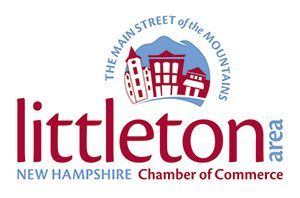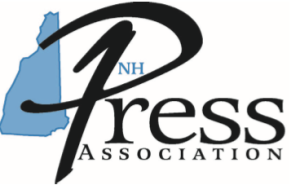
“We encourage youth and novice hunters to bring their deer to one of these biological reporting stations so they can directly contribute to deer management in Vermont,” said the Vermont Fish and Wildlife Department’s deer project leader Nick Fortin. “Examining deer during this weekend is our best opportunity to assess the deer herd because hunters are allowed to harvest any deer, including spike bucks. Biologists will be collecting data on age, weight and antler development to help guide future deer management decisions.”
Hunters are required to report deer in person at a big game reporting station during youth and novice weekend. Online reporting will not be available. This requirement allows biologists to collect important information from as many deer as possible over the weekend.
These area reporting stations will have a biologist present on October 25 and 26: R&L Archery, Barre; The Concord Station, Concord; Wright’s Enterprises, Derby; East Corinth General Store, East Corinth; Smith’s Grocery, Greensboro Bend; Bob’s Quick Stop, Irasburg; Lead & Tackle, Lyndonville; and The Gun Room, Thetford Center.
Stay Safe, Wear Orange
“Hunting is one of the safest outdoor activities, thanks to advances in education as well as science,” said Fish and Wildlife Commissioner Jason Batchelder.
“We should strive to be the safest we can by wearing at least a hunter orange hat and vest,” added Vermont Hunter Education Program Coordinator Nicole Meier. “Deer are most active during dawn and dusk hours when visibility is low. You can improve your chances of being seen by other hunters by wearing hunter orange, which can be seen even in low-light situations.”
“While it isn’t recommended to wear orange during waterfowl and turkey seasons, we certainly still recommend hunter orange when you are going to and from your blind, treestand or calling spot,” added Meier.
While some hunters might be concerned that deer are scared by hunter orange, in fact deer have been shown to be unaffected by the color. A deer’s vision is based on movement, patterns and color variations. Unlike humans, deer do not have multiple color receptors in their eyes. They can see color, but their spectrum is limited. This means deer must rely heavily on their ability to detect movement over the ability to interpret color variations and patterns.
I should add that New Hampshire Fish and Game has the same message for hunters and those who hike in the woods during hunting seasons.
Get The Lead Out
The Vermont Fish and Wildlife Department encourages hunters to voluntarily use non-lead ammunition.
Lead bullets scatter lead fragments well beyond the point of entry as they expand. These fragments can be ingested by wildlife when they scavenge carcass remains or gut piles. Even small amounts of lead can cause health problems and death for wildlife, especially for birds such as bald eagles, crows, ravens, and vultures that feed on these remains.
Lead is also a proven human health concern, and lead particles in game meat are often too small to detect by sight, feel or taste.
“Finding non-lead ammunition used to be difficult because it was not widely manufactured,” said Fish and Wildlife Commissioner Jason Batchelderer, but non-lead big game ammunition with copper or copper alloy bullets is now produced by most ammunition companies, and it provides consistent expansion as well as excellent weight retention and penetration. It does cost a little more, but it is a healthy choice.”
Non-lead shotgun shells have been required by the U.S. Fish and Wildlife Service for waterfowl hunting since 1991.
To learn more about switching to non-lead ammunition, visit https://www.leadfreepartnership.org/.
Trapping Seasons Open Saturday In Vermont
Vermont’s regulated land and water trapping seasons open on Saturday, October 25. Fish and Wildlife urges the public to be aware that there may be traps in the woods and what the laws require of the trappers as well as offering information on how to remove a pet from a trap.
Traps can be set on land for species such as fox, coyote and raccoon through December 2025, and in the water or under ice for species such as beaver, muskrat and otter through March 2026. These species have healthy populations in Vermont that can sustain regulated trapping for fur and food each year.
“If you plan to enjoy Vermont’s outdoors this fall and winter it is important to know when trapping season is open and to be aware that trappers may be using the same public lands or, with landowner permission, private lands,” said Wildlife Biologist and Furbearer Project Leader Brehan Furfey. “Vermont has had regulated trapping seasons for decades and Vermont hikers, hunters, skiers, trappers and others have a good track record of sharing the same landscape safely and respectfully.”
In December 2023, the Vermont Fish and Wildlife Board adopted amended regulations that require trappers to use traps that reduce harm to captured animals and to follow safety measures to minimize conflicts with pets and other outdoors users.
It is extremely rare for pets to be caught by law abiding trappers during Vermont’s regulated seasons. The department’s website has information on how to remove pets from traps in the unlikely event they are caught. Anyone whose pet is caught in a trap should report the incident to a game warden after freeing their pet.
It is illegal to interfere with lawfully set traps in Vermont. Anyone who finds a trap that appears to be in violation of Vermont’s trapping regulations should contact a game warden.
Bits and Pieces
Vermont Fish and Wildlife’s 2026 Calendar includes beautiful photography of Vermont species along with hunting, fishing and trapping season dates for each month, making it the perfect gift for anyone who loves the outdoors.
“Vermont’s wildlife, habitats and people are interconnected. This calendar celebrates that,” said Fish and Wildlife Commissioner Jason Batchelder. “It has spectacular monthly images of a gray tree frog, Eastern coyote, mink, moose, weasel, wild turkey gobbler, and white-tailed deer buck as well as migratory birds such as a snowy owl, prairie warbler and red-winged blackbird.”
The calendar highlights work by well-known Vermont photographers including Roger Irwin, Kent McFarland, Roger Farmer, and Bob Etzweiler as well as up-and-coming artists like Josh Blouin, Dan Lovell and Emanuel Soza-Foias. It is available for $15 from Vermont Fish and Wildlife Department with a printable free-shipping mail-in order form on Vermont Fish and Wildlife’s website.
Proceeds from calendar sales contribute to the department’s Habitat Stamp Fund, which helps buy and manage land for Vermont’s wildlife.
***
New Hampshire hunters can share their fall harvest with the needy through the “Hunt for the Hungry” program at the New Hampshire Food Bank, a program of Catholic Charities NH. The New Hampshire Food Bank is collecting donations of processed deer and moose for distribution to more than 400 food pantries, soup kitchens, homeless shelters, and group homes statewide.
To learn how to donate game, and for packaging instructions, call the New Hampshire Food Bank at 603- 669-9725. If you would like to share an entire deer or moose, process the meat and have your donation stamped by a USDA approved butcher. Contact the Food Bank for USDA approved butchers in your region.
The New Hampshire Food Bank is not equipped to accept donations of bear meat, fowl, or wild game birds such as duck, goose, turkey, or grouse.
For more information on donating to the New Hampshire Food Bank, visit www.nhfoodbank.org.
***
Mark Breen reports in the Fairbanks Museum's Skywatch Almanac that on
October 23, 1843: “Early snowstorm brought 6 inches to Burlington, VT, while Barnard and Newbury reported 12 inches. Some newspapers mentioned four foot drifts in some places.”
October 23, 1791: “Samuel Williams weather records from Rutland noted 10 inches of snow."
October 24, 1969: “Woodstock, VT woke up to 10 degrees, but 3 days later it warmed in the 60s.”
October 25, 2017: “One week of ‘Gossamer Summer’, a spell of late-season warmth, with daily highs in the 70s in St. Johnsbury, part of the warmest October on modern record.”
Parting Shots
I was very impressed to learn that 6 year old, Oaklyn Neilson has climbed all 48 of New Hampshire’s 4,000-foot peaks, a feat that took many of us years to accomplish. Mount Kearsarge was his final, completing a journey that began in 2022 when he was just 3.
His mother, Sarah Neilson and Oaklyn have now stood on more than 150 summits.
Sarah said her love of the mountains began with her dad, packing the truck before dawn, long drives north as the sun rose, days on the trail, nights camping.
Later life took a turn and the former collegiate athlete became an alcoholic. Some rough years followed until nine years ago when she stopped drinking and laced up her running shoes again.
When Oaklyn was born, Sarah couldn’t stop doing the thing that kept her healthy so, she took him with her. It is a great story for both mom and son.
***
Joel Najman’s My Place airs on Vermont Public radio at 7 p.m. Saturdays. It is a must listen to for me as the songs are ones I grew up listening to and hearing them again brings back so many memories.
Host Joel Najman weaves musicology, anthropology, sociology, and even psychology among the music of the '50s and '60s, creating a snapshot of life at that time. He also tells us the story behind each song, so many interesting things I never knew.
Syndicated columnist Gary W. Moore may be reached by e-mail at gwmoore1946@icloud.com or at Box 454, Bradford, VT 05033.
copyright 2025 Gary W. Moore
Have a story?
Let's hear it!
(802) 757-2773
(603) 787-2444
news@thebridgeweekly.com




